Related Research Articles

The drow or dark elves are a generally evil, dark-skinned, and white-haired subrace of elves in the Dungeons & Dragons fantasy roleplaying game.

In Norse mythology, a vargr is a wolf, especially the wolf Fenrir and the wolves that chase the sun and moon Sköll and Hati. Based on this, J. R. R. Tolkien in his fiction used the form warg, which may incorporate Old English wearh, as the name of a particularly large and evil kind of wolf that could be ridden by orcs. Through Tolkien's influence, the concept has been used in fantasy works by other authors and in other media.
Simon Hawke is an American author of mainly science fiction and fantasy novels. He was born Nicholas Valentin Yermakov, but began writing as Simon Hawke in 1984 and later changed his legal name to Hawke. He has also written near future adventure novels under the pen name J. D. Masters and a series of humorous mystery novels. He was the Colorado Writer of the Year, 1992.
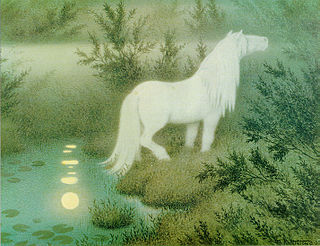
A fantasy world is an author-conceived world created in fictional media, such as literature, film or games. Typical fantasy worlds involve magic or magical abilities, nonexistent technology and sometimes, either a historical or futuristic theme. Some worlds may be a parallel world connected to Earth via magical portals or items ; an imaginary universe hidden within ours ; a fictional Earth set in the remote past or future ; an alternative version of our History ; or an entirely independent world set in another part of the universe.
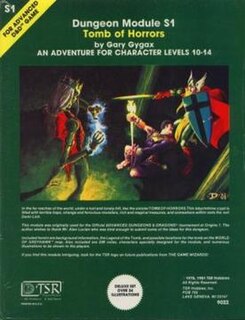
Tomb of Horrors is an adventure module written by Gary Gygax for the Dungeons & Dragons (D&D) role-playing game. It was originally written for and used at the 1975 Origins 1 convention. Gygax designed the adventure both to challenge the skill of expert players in his own campaign and to test players who boasted of having mighty player characters able to best any challenge. The module, coded S1, was the first in the S-series, or special series of modules. Several versions of the adventure have been published, the first in 1978, and the most recent, for the fifth edition of D&D, in 2017 as one of the included adventures in Tales from the Yawning Portal. The module also served as the basis for a novel published in 2002.
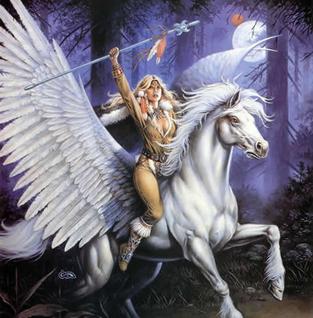
Goldmoon is a fictional character from the Dragonlance fantasy series of novels and role playing games, originally published by TSR, Inc. and later by Wizards of the Coast.
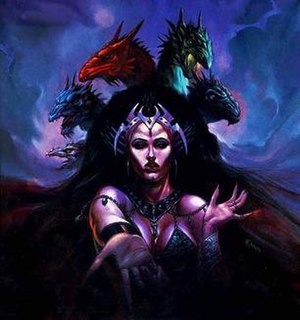
Takhisis is a fictional character from the Dragonlance universe. She is depicted as the main goddess of evil in the setting and head of the Dark Pantheon.

Teresa Nielsen Hayden is an American science fiction editor, fanzine writer, essayist, and workshop instructor. She is a consulting editor for Tor Books and is well known for her weblog, Making Light. She has also worked for Federated Media Publishing, when in 2007 she was hired to revive the comment section for the blog Boing Boing. Nielsen Hayden has been nominated for Hugo Awards five times.
Judith Tarr is an American fantasy and science fiction author.

Francis Paul Wilson is an American author, primarily in the science fiction and horror genres, and a medical doctor.
James Bond was a comic strip that was based on the eponymous, fictional character created by author Ian Fleming. Starting in 1958 and continuing to 1983, it consisted of 52 story arcs that were syndicated in British newspapers, seven of which were initially published abroad.
Stephen Coonts is an American spy thriller and suspense novelist.
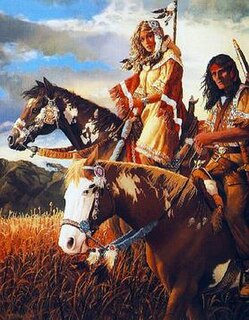
Riverwind is a fictional character appearing in the Dragonlance series of Dungeons & Dragons role-playing game supplements and novels, created by Margaret Weis and Tracy Hickman and published by TSR.
Midnight Louie is the name of a slightly overweight fictional black cat in a series of mystery novels by author Carole Nelson Douglas, and is the general title for the same series. Each volume of the series is told from the point of view of the cat's "roommate", Temple Barr, a freelance public relations consultant, and from the point of view of Midnight Louie, the cat himself. Midnight Louie's chapters are written in what the author describes as a style reminiscent of Damon Runyon, generic gumshoe, and Mrs. Malaprop. As the Las Vegas-set series continues, three other main human characters have points of view: a hard-boiled female homicide detective, C.R. Molina; Matt Devine, an ex-priest; and Max Kinsella, a stage magician. The mix of adventure, mystery, humor and social issues is why the author describes the series as "cozy-noir." Midnight Louie was introduced as a character in the author's early romance-with-mystery series, initially called the Crystal series. The author was not shown galleys of the books until she demanded them, too late to undo the romance editor's deep cuts of mystery elements, including Midnight Louie sections. The books were later reverted and Douglas reissued them in the original form as The Cat and a playing card series. In the interim, Douglas had started writing Midnight Louie's own new mystery series.
Carole Nelson Douglas is an American writer of sixty novels and many short stories. She has written in many genres, but is best known for two popular mystery series, the Irene Adler Sherlockian suspense novels and the Midnight Louie mystery series.
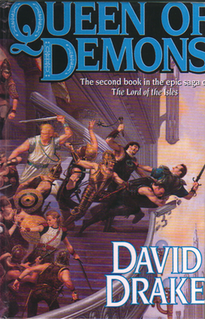
Queen of Demons (1998) is a fantasy novel by American writer David Drake, part of the series Lord of the Isles.
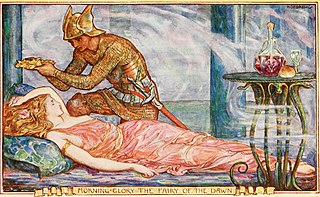
Fantasy is a genre of speculative fiction set in a fictional universe, often inspired by real world myth and folklore. Its roots are in oral traditions, which then became fantasy literature and drama. From the twentieth century it has expanded further into various media, including film, television, graphic novels, manga, animated movies and video games.
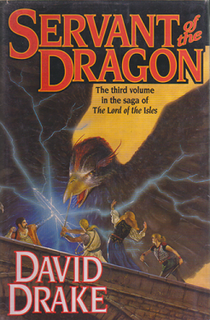
Servant of the Dragon (1999) is a fantasy novel in the series, Lord of the Isles by author David Drake.
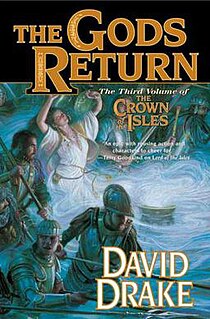
The Gods Return is the ninth and final book in the Lord of the Isles Saga by David Drake. It was published in 2008 by Tor Books; the third books of the Crown of the Isles. It follows the stories of Garric, Sharina, Cashel and Ilna in the newly changed world that was once the Isles and is now a great continent: the Land.

Caroline Spector is a science fiction and fantasy writer who has also written role-playing game modules and computer game hint books. She also spent two years as Associate Editor at Amazing Stories magazine. She is a member of George R. R. Martin's Wild Cards consortium, the group of contributing authors to the ongoing Wild Cards shared world original story anthology series edited by Martin, now in its 22nd volume, and currently published by Tor Books.
References
- ↑ Drake, David (2006). The Fortress of Glass. Tor. p. 177. ISBN 0-7653-1259-X.
- ↑ The Mirror of Worlds